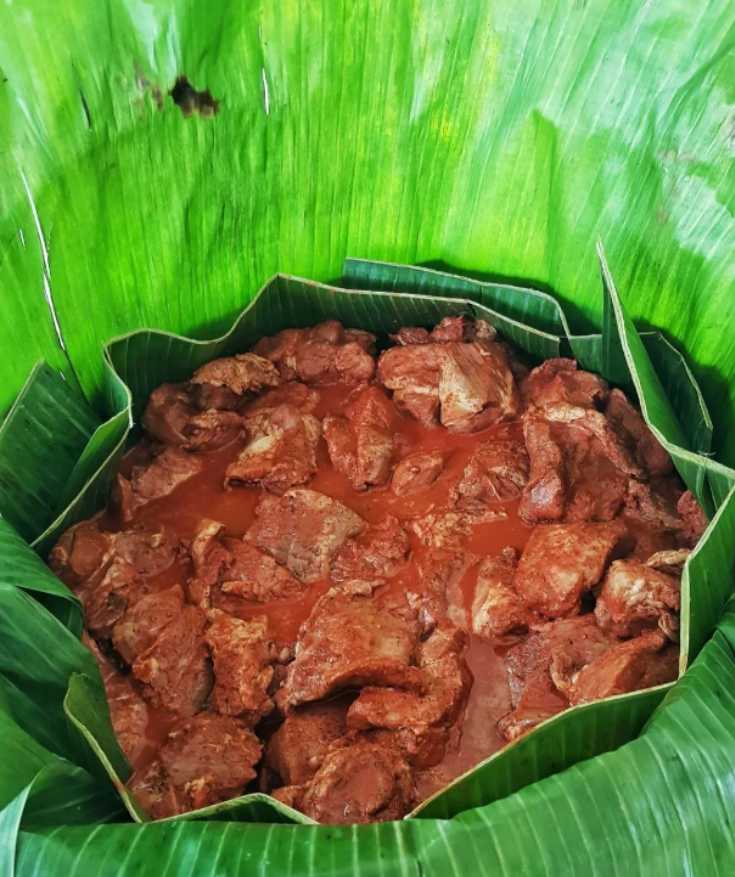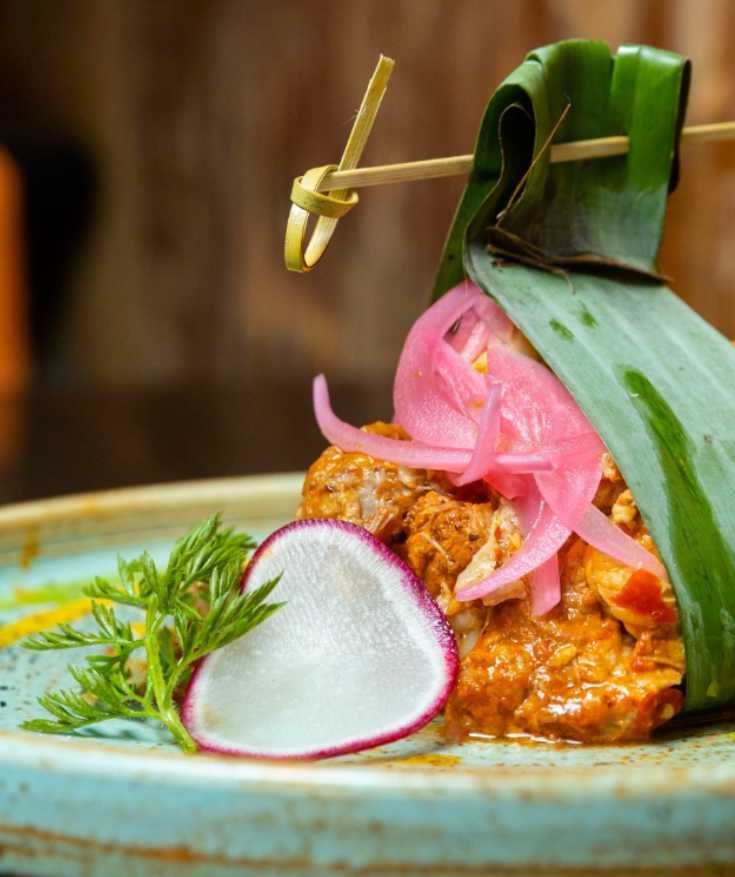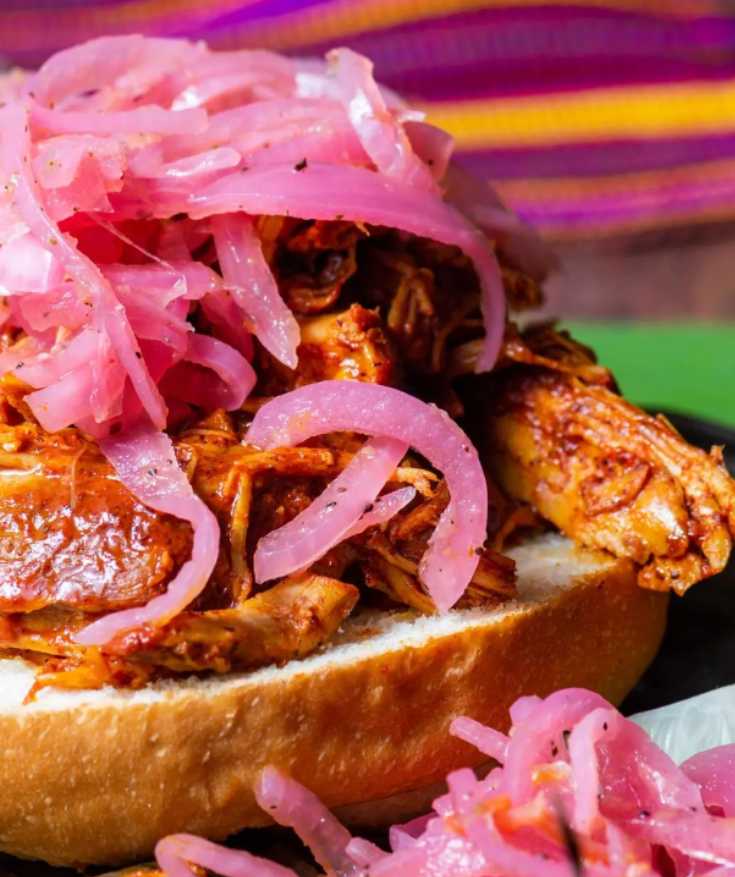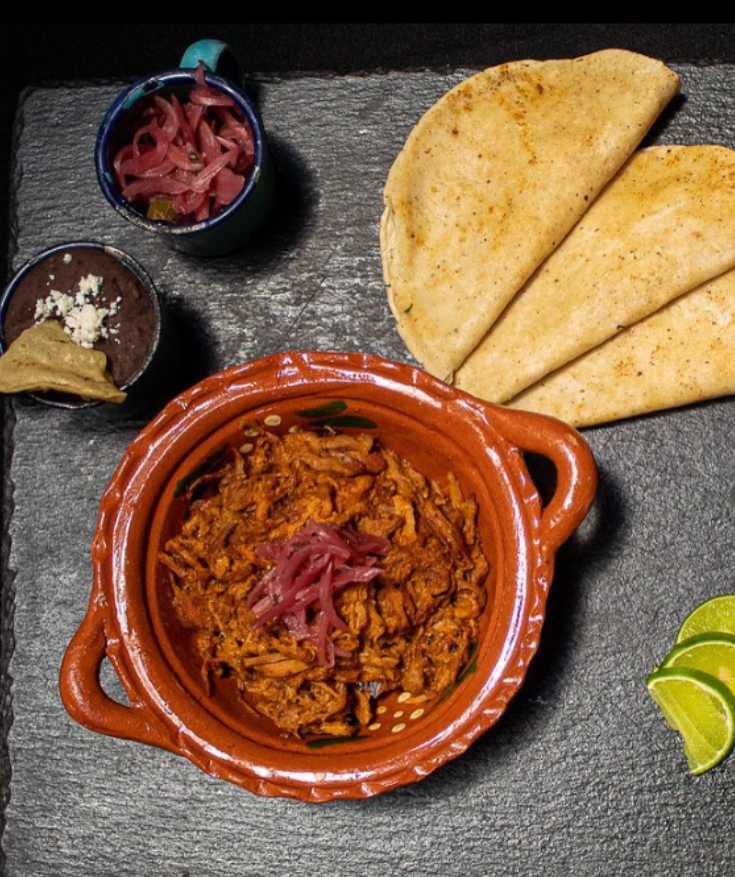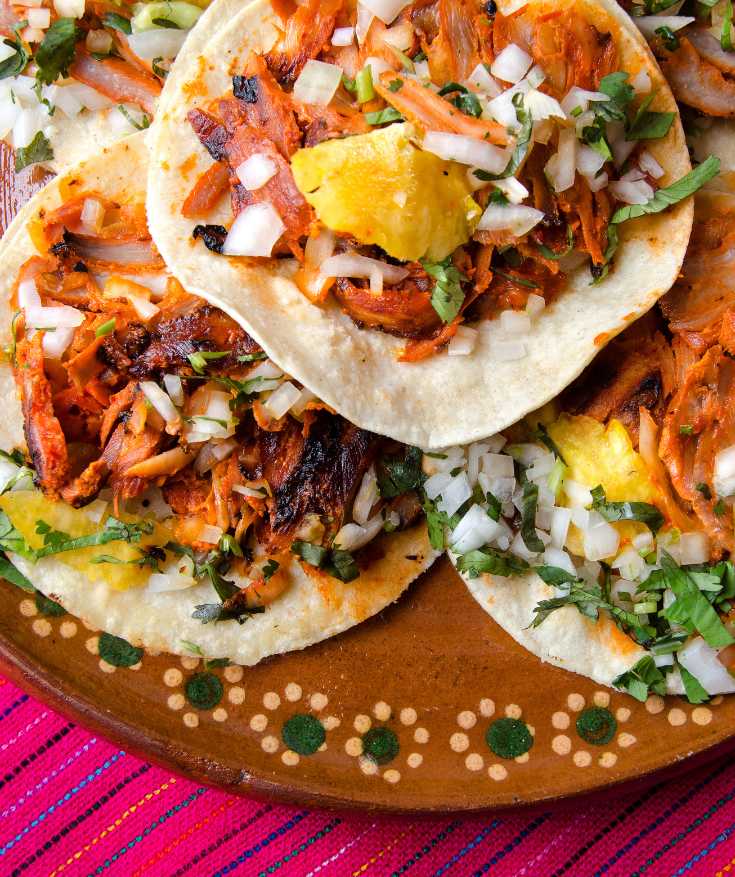Mexican Food > Cochinita Pibil
Cochinita Pibil is an iconic dish in Mexican cuisine and a Yucatecan specialty featuring succulent pork marinated overnight with annatto and citrus; it’s then slow-cooked for hours before being served inside a fresh tortilla.
The distinct flavor comes from the combination of orange juice, achiote paste, garlic, cumin, and oregano. The pork is wrapped up in banana leaves or parchment paper to help keep all the flavors intact while cooking.
Once finished, you can enjoy Cochinita Pibil with pickled red onions on top or inside tacos.
History of Cochinita Pibil
Cochinita Pibil date back to ancient Mayan times. The name “cochinita” translates to “little pig” and pibil simply means “buried.” This unique cooking method of burying the pork in an underground oven called a pib was initially used by the Mayans as a way to preserve meat and keep it moist while it cooked.
Today, cochinita pibil has become widely popular throughout Mexico and is often served at restaurants and special events. The marinated pork is traditionally wrapped in banana leaves before being buried in the pib and cooked for several hours until tender.
How to make Cochinita pibil
This recipe starts with pork marinated in orange juice, garlic, oregano, cumin, and annatto seed powder. Then the pork is slow roasted in banana leaves over an open fire or in the oven until it’s fall-apart tender.
Once done cooking, serve up tacos filled with succulent pork and your favorite toppings for an unforgettable meal that everyone will love.
Cochinita Pibil FAQ
Still have questions about Cochinita Pibil?
If you cannot find an answer to your question in our FAQ, leave your question in the comment box below, and we’d be happy to update this post. Follow our social media channels, where we answer questions without a cost!

